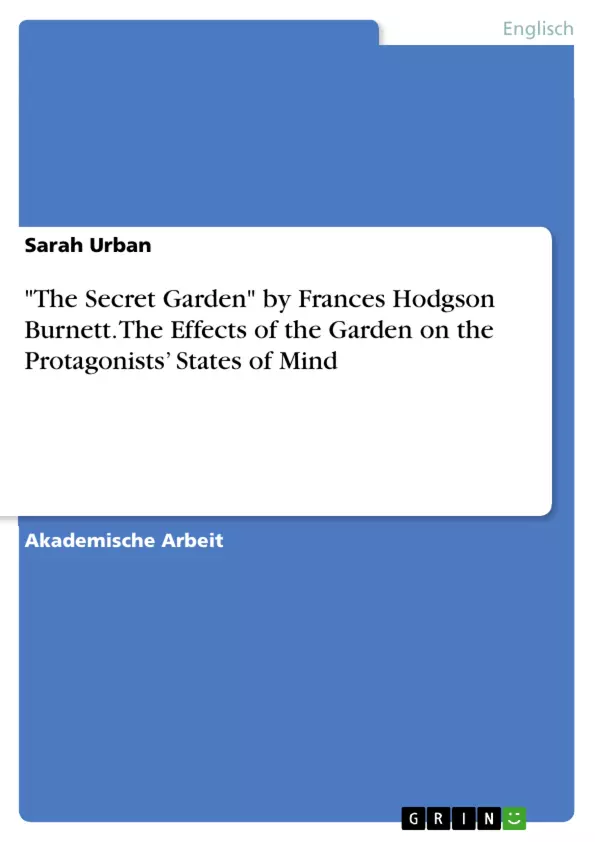This paper deals with the question, to what extent the "The Secret Garden" influences Mary Lennox and her cousin Colin Craven and what effects does this have on their states of mind.
Life and nature are at the centre of action. Even today, the garden motif is steadily present in the literature, and it also finds a high value in children’s literature. A prime example of a book in children’s literature is The Secret Garden by Frances Hodgson Burnett, which was first published in 1911; it has been reissued on every occasion up until today. As the title suggests, the garden plays a central role in the book and seems to bring with it a mysterious aspect. The present term paper focuses on this very garden and explains how it influences the protagonists Mary Lennox and Colin Craven.
Inhaltsverzeichnis
- Introduction
- Theoretical Framework
- Childhood
- Children's Literature
- Literature in the Epoch of Romanticism
- Garden Motif in the Literature
- Analysis
- Healing and Development
- A Secret Mysterious Haven
- Friendship and Bonding
- Conclusion
Zielsetzung und Themenschwerpunkte
Diese Arbeit untersucht den Einfluss des "Geheimen Gartens" auf die Protagonisten Mary Lennox und Colin Craven in Frances Hodgson Burnetts Roman "The Secret Garden". Der Fokus liegt dabei auf der Frage, inwieweit der Garten die Gemütslagen der beiden Kinder beeinflusst und welche Auswirkungen dies auf ihre Entwicklung hat.
- Die Bedeutung von Kindheit und deren Einfluss auf die Entwicklung von Kindern
- Die Rolle des Gartens als symbolischer Ort der Heilung und Transformation
- Die Auswirkungen des Gartens auf die Gemütslagen der Protagonisten
- Die Bedeutung von Freundschaft und Bindung für die Entwicklung der Kinder
- Die Verbindung zwischen der Natur und dem menschlichen Geist
Zusammenfassung der Kapitel
Das erste Kapitel führt in die Thematik ein und stellt die Forschungsfrage vor. Das zweite Kapitel beleuchtet den theoretischen Rahmen der Arbeit. Es werden die Bedeutung von Kindheit, die Besonderheiten der Kinderliteratur, die Epoche der Romantik und die Rolle des Gartenmotivs in der Literatur erörtert. Das dritte Kapitel analysiert den Einfluss des "Geheimen Gartens" auf die Protagonisten Mary Lennox und Colin Craven. Es werden die Aspekte Heilung und Entwicklung, der Garten als geheimnisvoller Zufluchtsort sowie Freundschaft und Bindung untersucht.
Schlüsselwörter
Kinderliteratur, The Secret Garden, Frances Hodgson Burnett, Gartenmotiv, Kindheit, Heilung, Entwicklung, Freundschaft, Bindung, Romantik, Symbolismus, Gemütslage.
- Citar trabajo
- Sarah Urban (Autor), 2021, "The Secret Garden" by Frances Hodgson Burnett. The Effects of the Garden on the Protagonists’ States of Mind, Múnich, GRIN Verlag, https://www.grin.com/document/1112997



